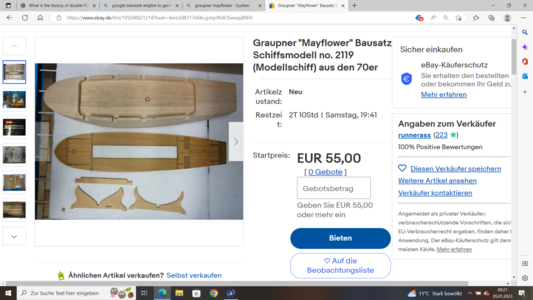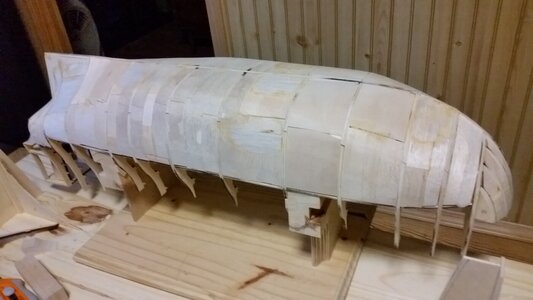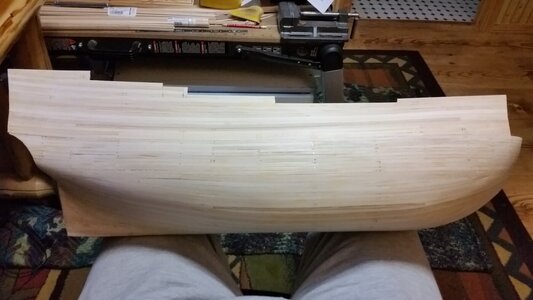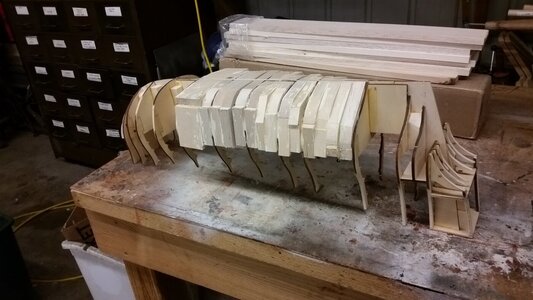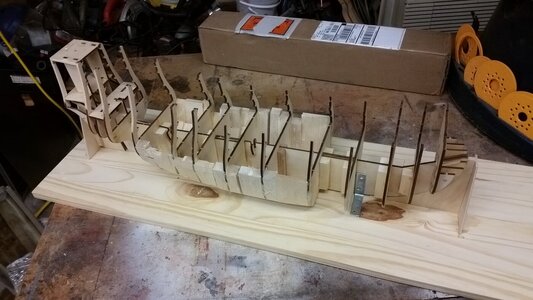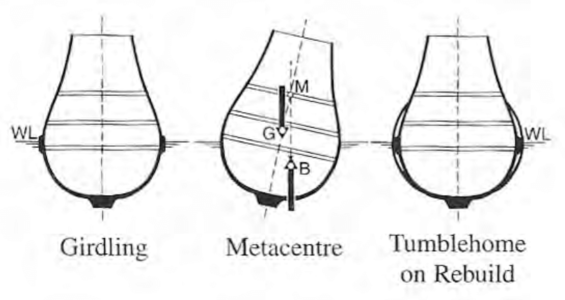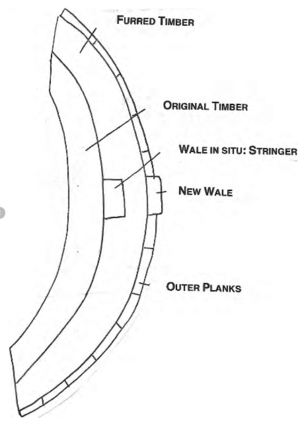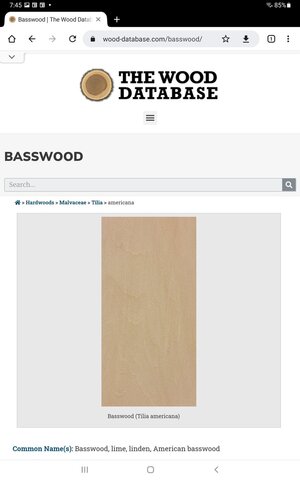Back in 1954, as a mere powder monkey, I was given a copy of the Hobbies Handbook and a kit for making one of the smallest (and cheapest!) models: the Bonaventure. I used to spend many hours ogling the range of larger ship model kits that were offered in the catalogue but were too expensive to buy.
Back in 1994 I came across the then current copy of the the same magazine and found that the same models were still on offer! In a fit of nostalgia I bought a kit for the "Great Harry" and the plans for my first model "Bonaventure".
The hulls on all of these models were to be carved from solid wood as two halves glued to either side of a keel.
I made a start on the "Great Harry" (picture below) but never finished it.
When were the first model kits introduced that use the 'modern' double plank on frame construction?. In the Greenwich Maritime Museum there are many old ship models. Some are described as being "block" models (presumably carved from solid wood) while others are "plank on Frame". I assume in the latter case there was just a single layer of planks and the frame would literally be a frame and not complete bulkhead sections.
I have noticed in the build logs in SOS that some modellers fill in the spaces between bulkhead with blocks (often balsa) and shape them to the hull. In such cases are the first layer planks necessary or could one go straight to the final layer?
With the aid of the WWW I recently acquired a copy of the original 1954 Hobbies Handbook. Where have the last seven decades gone?
Some supplementary, frivolous questions.
Could CNC be used to cut half hulls to be used as bases for final layer planking only?
Has anyone ever bought a plastic ship kit to provide a hull then completed the model in wood?
Pictured below: The acquired 1954 handbook and the pages I lusted over; The "bonaventure" plans showing the minimal assistance given to shape the hull; The long neglected "great Harry"
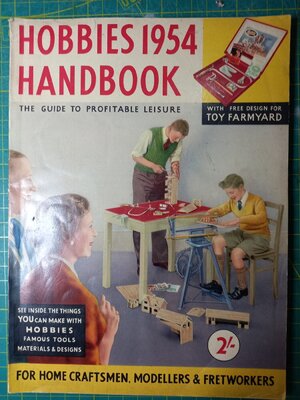
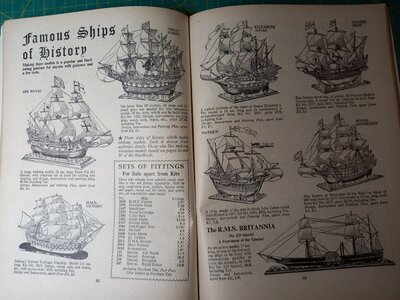
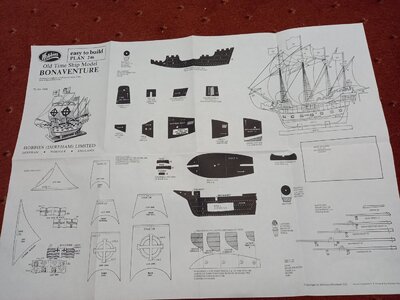
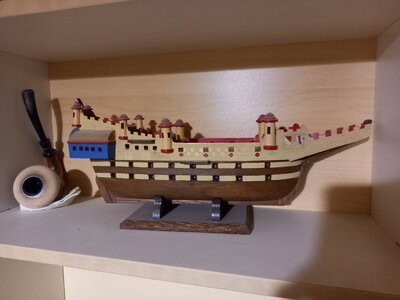
Back in 1994 I came across the then current copy of the the same magazine and found that the same models were still on offer! In a fit of nostalgia I bought a kit for the "Great Harry" and the plans for my first model "Bonaventure".
The hulls on all of these models were to be carved from solid wood as two halves glued to either side of a keel.
I made a start on the "Great Harry" (picture below) but never finished it.
When were the first model kits introduced that use the 'modern' double plank on frame construction?. In the Greenwich Maritime Museum there are many old ship models. Some are described as being "block" models (presumably carved from solid wood) while others are "plank on Frame". I assume in the latter case there was just a single layer of planks and the frame would literally be a frame and not complete bulkhead sections.
I have noticed in the build logs in SOS that some modellers fill in the spaces between bulkhead with blocks (often balsa) and shape them to the hull. In such cases are the first layer planks necessary or could one go straight to the final layer?
With the aid of the WWW I recently acquired a copy of the original 1954 Hobbies Handbook. Where have the last seven decades gone?
Some supplementary, frivolous questions.
Could CNC be used to cut half hulls to be used as bases for final layer planking only?
Has anyone ever bought a plastic ship kit to provide a hull then completed the model in wood?
Pictured below: The acquired 1954 handbook and the pages I lusted over; The "bonaventure" plans showing the minimal assistance given to shape the hull; The long neglected "great Harry"







